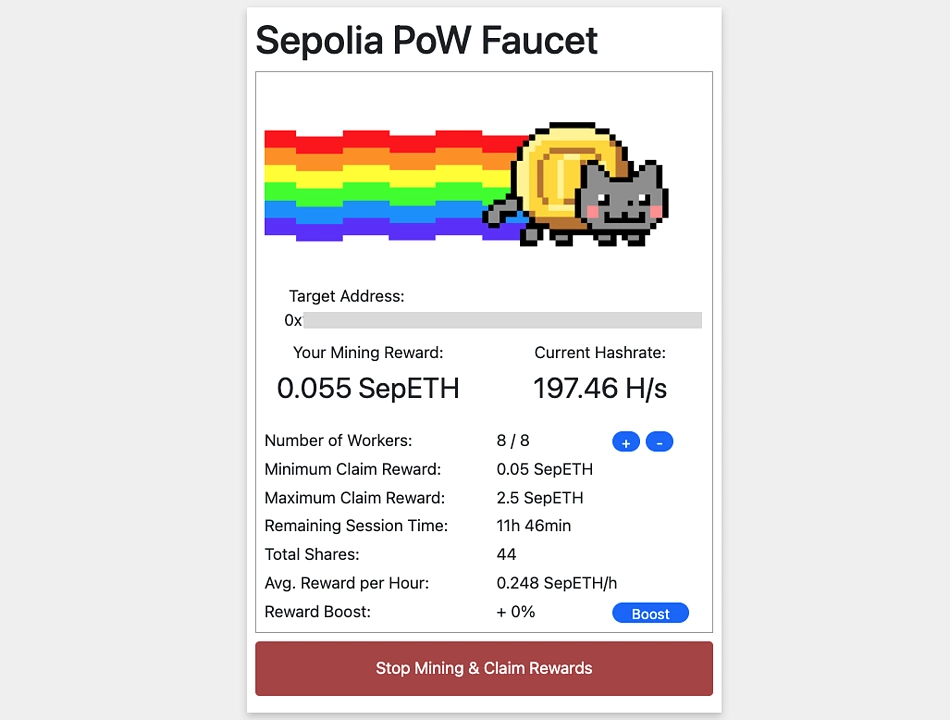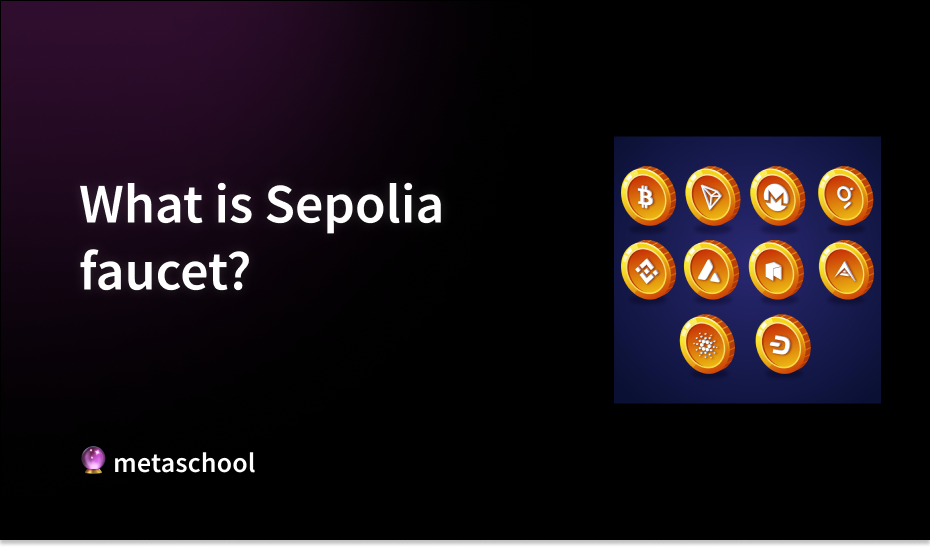Table of Contents
The Sepolia faucet is an important resource for developers looking to build on Ethereum or EVM Compatible smart contracts and decentralized applications (dApps) without using real ETH but test tokens. As one of the primary testing networks following the Ethereum merge, Sepolia offers developers a sandbox environment that closely mirrors the functionality of the Ethereum mainnet.
Understanding Sepolia Testnet
Sepolia is a proof-of-stake testnet that replaced the older Ropsten network, providing developers with a more efficient and environmentally friendly testing environment. Unlike its predecessor Goerli, Sepolia maintains a smaller validator set, making it more centralized but also more stable and predictable for testing purposes. This characteristic makes it particularly suitable for developers who need a reliable environment to test their smart contracts and applications.
How the Sepolia Faucet Works?
A Sepolia faucet is a web-based service that distributes free test ETH (SepoliaETH) to developers. These faucets typically require users to input their wallet address and complete a CAPTCHA or similar verification process to prevent abuse. Most faucets implement rate limiting, allowing users to request tokens only once every 24 hours to ensure fair distribution among all developers.
Accessing and Using the Faucet
To obtain Sepolia ETH, developers must first configure their MetaMask or other Ethereum wallet to connect to the Sepolia network. This involves adding the Sepolia network configuration to their wallet, including the correct RPC URL, chain ID (11155111), and network name. Once connected, developers can visit various Sepolia faucet websites, authenticate their request, and receive a small amount of test ETH directly to their wallet.
Claim Sepolia ETH on Alchemy Sepolia ETH Faucet
Alchemy offers faucet service for Ethereum’s Goerli and Sepolia testnets. Alchemy remits up to 0.5 Sepolia ETH daily. In order to mitigate abuse, an Alchemy account is needed to access the faucet service.
- First, create an Alchemy account to request Sepolia ETH.
- Visit the Alchemy Sepolia faucet and log in with your Alchemy account.
- Enter your wallet in the provided box, complete the CAPTCHA verification, and click Send Me ETH
Sepolia ETH will be sent to your wallet and accessible once the transaction is complete.
Claim Sepolia ETH on the QuickNode Sepolia Faucet
QuickNode is a multichain faucet service, and supported testnets on the platform include testnets for Ethereum, Polygon, Binance Smart Chain, Solana, Coinbase’s Base, and several other chains testnets.
QuickNode offers 0.05 Sepolia ETH daily, and you can double this by tweeting about your claim.
To obtain Sepolia ETH from QuickNode:
- Visit QuickNode
- Choose a preferred connection method. You can directly connect your wallet to the platform, or copy and paste your wallet address on the provided box.
Select Ethereum from the chain options and Sepolia from the network options and click Continue.
Note: that you must hold at least 0.001 ETH on Ethereum Mainnet to use the QuickNode faucet for EVM testnets.
Claim Sepolia ETH on the Infura Sepolia Faucet
Infura claims to be the world’s most powerful suite of high-availability blockchain APIs and developer tools. It offers faucet services for the Sepolia network and Consensys Linea network. To mitigate abuse of the platform, Sepolia’s faucet services are only available to registered users, and the receiving wallet must have at least 0.001ETH on the main network. Infura offers 0.5 Sepolia ETH daily to registered users.
- To obtain Sepolia ETH from Infura, register for an Infura account. Complete account creation and log into your account.
- Visit the faucet platform for the Sepolia network. Enter your wallet address in the provided box and click Receive ETH
Done! Now 0.5 Sepolia ETH will be sent to your wallet.
Other Sepolia Faucets
Besides Infura and Alchemy, other faucets offer Sepolia ETH.
Sepolia PoW Faucet
The Sepolia PoW Faucet is an Ethereum faucet that runs on the Sepolia Testnet. In order to prevent malicious actors from exhausting available funds or accumulating enough ETH to mount spam attacks, the faucet requires some mining work to be done in exchange for Sepolia ETH.

Enter your ETH address and complete the reCAPTCHA, then click Start Mining.
- You will accumulate mining rewards in the form of Sepolia ETH (SepETH). Once done, click Stop Mining & Claim Rewards. Do note that there is a minimum claim reward of 0.05 Sepolia ETH before you can claim rewards.

- You can now click on Claim Rewards to receive Sepolia ETH in your wallet.
What Can Sepolia ETH Be Used For?
Now that you have received some testnet tokens from Sepolia faucet, you might wonder how you can put your new test token to use. Here are some things you can do with your Sepolia ETH.
As a Developer
Test your dApps: Every developer needs a testing environment. Web2 applications can be easily tested on your local host, but Web3 applications and smart contracts are quite different. Testing smart contracts on the main network involves using ETH tokens which is an expensive practice and also not recommended. With the Sepolia faucet and the Sepolia ETH, you can deploy your dApp multiple times using tokens that are nothing but pseudo-ETH tokens. Use your Sepolia ETH to perform preliminary tests on your application’s functionalities before opening it up for further testing.
As a User
Explore the Sepolia testnet: The Sepolia faucet is the most widely used testnet at the moment, especially after the deprecation of the Goerli network. You can use your Sepolia ETH to explore the network and the applications available.
Test and improve applications on the network: Developers are encouraged to deploy their test applications on Sepolia testnet. Individual users play the vital role of testing applications and pinpointing the strengths and weaknesses of these applications, and if you’re interested, you can take on this role for the applications deployed on Sepolia by using your Sepolia ETH to perform activities available on dApps deployed on the network. If the testing program is incentivized, you could benefit handsomely from playing this role as well.
Technical Considerations and Best Practices
When working with the Sepolia faucet, developers should be mindful of several technical aspects. First, transactions on Sepolia still require gas, albeit test gas, which helps simulate real-world conditions. The gas prices on Sepolia are intentionally kept low to facilitate testing, but developers should still implement proper gas optimization in their contracts.
Developers should regularly monitor the Sepolia network’s status through block explorers and network statistics platforms. This helps ensure that any issues encountered during testing are due to their code rather than network conditions. The Sepolia network undergoes periodic maintenance and updates, which can affect faucet availability and network performance.
While Sepolia uses test ETH with no real-world value, developers should still implement proper security measures in their testing environment. This includes protecting private keys, implementing proper access controls in smart contracts, and following secure coding practices. This ensures that when code is deployed to mainnet, security vulnerabilities won’t be inadvertently introduced.
Integration with Development Workflows
Many development teams integrate Sepolia faucet interactions into their automated testing pipelines. This can be achieved through programmatic access to faucets via APIs, though not all faucets provide this capability. Teams often maintain a pool of test accounts with sufficient Sepolia ETH to ensure continuous integration and testing processes run smoothly.
Conclusion
Sepolia faucets represent an essential component of the Ethereum development ecosystem, providing developers with the resources needed to build and test the next generation of blockchain applications. While they may seem like simple tools, their reliability and accessibility are crucial for maintaining a robust and active development community. As Ethereum continues to evolve, the role of testnets like Sepolia and their associated faucets becomes increasingly important. The development community’s feedback and requirements help shape the future of these testing infrastructures, ensuring they remain valuable tools for blockchain development and innovation.
Frequently Asked Questions(FAQs)
Is claiming tokens from the Sepolia faucet free?
Yes, claiming test ETH is free on the Sepolia faucet, but you need to maintain a minimum of 0.001 ETH in your mainnet.
Are the test tokens real money?
No, the test tokens are not real money. They are only used for testing your smart contracts and their integration into the application.
What is a testnet token?
Testnet tokens are a test currency that allows you to test your Ethereum application before going live on mainnet. Testnet tokens can be used in place of mainnet Ether tokens on testnets like Sepolia.
How to get Sepolia on the Arbitrum network?
To get Sepolia tokens on Arbitrum or any other network like Base or Linea you need to add the respective network in your wallet and then claim the tokens using any faucet that was mentioned above.
